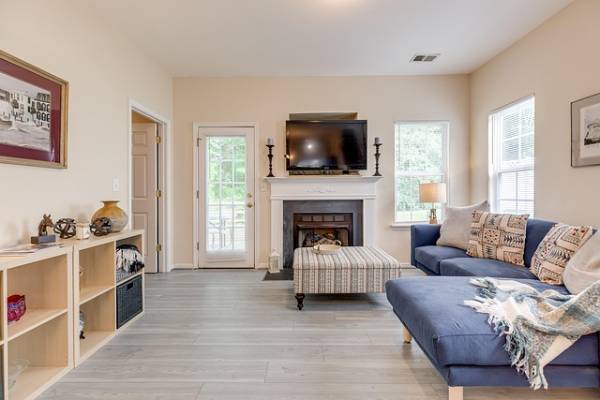Choosing furniture that complements your home’s aesthetic is more than just a practical decision; it’s an opportunity to express your personal style and enhance your living space. Whether you’re updating a single room or outfitting an entire house, the right furniture can make a significant difference in achieving a cohesive and inviting atmosphere. Matching furniture with your home’s aesthetic is a rewarding process that can transform your living space into a reflection of your personal style. In this guide, we’ll delve into the essentials of matching furniture with your home’s aesthetic, offering practical advice and inspiration to help you make informed choices.
Understanding Your Home’s Aesthetic
Before diving into furniture selection, it’s crucial to understand your home’s overall aesthetic. This involves more than just knowing whether you prefer modern or traditional styles. It means considering the architectural elements of your home, the existing color palette, and the mood you wish to create. Start by identifying the key characteristics of your home’s style—whether it’s minimalist, rustic, eclectic, or something else entirely.
1. Assessing Architectural Features
Your home’s architectural features play a significant role in shaping its aesthetic. For instance, a house with exposed brick and industrial elements may lend itself well to modern or industrial-style furniture. Conversely, a home with classic crown molding and hardwood floors might be better suited for traditional or transitional furniture. Take note of these elements as they will guide you in selecting pieces that either complement or intentionally contrast with the existing design.
2. Considering Color and Texture
Color and texture are vital aspects of creating a cohesive look. When selecting furniture, consider how it will blend with or enhance your existing color scheme. For a harmonious look, choose pieces that align with the room’s color palette. If you have a neutral palette, you might opt for furniture in complementary shades or textures to add interest. Conversely, if your room features bold colors or patterns, neutral or subtly textured furniture can provide balance.
Matching Furniture to Your Style
Once you have a clear understanding of your home’s aesthetic, the next step is to choose furniture that aligns with this style. Here’s how you can match furniture to various popular styles:
1. Modern
Modern aesthetics emphasize clean lines, minimalism, and functional design. When selecting modern furniture, look for pieces with sleek profiles and understated elegance. Materials such as glass, metal, and polished wood are common in modern design. Opt for furniture with simple forms and minimal ornamentation to maintain a streamlined appearance.
2. Traditional
Traditional style is characterized by classic, timeless designs and rich details. Furniture in this style often features ornate carvings, high-quality wood, and plush fabrics. For a traditional look, choose pieces with elegant curves, rich finishes, and traditional patterns. Upholstered furniture with sophisticated detailing and dark wood accents will enhance the classic appeal of your space.
3. Rustic
Rustic design embraces natural materials and a cozy, homey feel. When selecting rustic furniture, prioritize pieces made from solid wood, stone, or other natural materials. Look for furniture with distressed finishes, visible grain patterns, and handcrafted details. This style often incorporates elements like wrought iron or leather, which add to the rugged charm.
4. Eclectic
Eclectic style allows for a mix-and-match approach, combining elements from various styles and periods. To achieve an eclectic look, choose furniture that adds personality and visual interest. This might include vintage finds, bold patterns, or unique shapes. The key is to ensure that your selections complement each other, creating a cohesive yet diverse look.
Practical Tips for Matching Furniture
1. Start with a Focal Point
Choosing a focal point for your room, such as a standout piece of furniture or a statement wall color, can help guide your decisions. For example, if you have a striking sofa or a vibrant rug, build your furniture selection around these elements to create a cohesive look.
2. Balance Proportions
Balance is essential in furniture selection. Ensure that the scale and proportions of your furniture are appropriate for the size of the room. Overly large pieces can overwhelm a small space, while small furniture in a large room can feel lost. Aim for a balanced arrangement that allows for comfortable movement and visual harmony.
3. Incorporate Personal Touches
Adding personal touches to your furniture can help make your space truly unique. Consider incorporating custom upholstery, personalized artwork, or family heirlooms. These elements not only enhance your home’s aesthetic but also reflect your personality and story.
4. Test for Comfort and Functionality
While style is important, comfort and functionality should not be overlooked. Ensure that the furniture you choose is comfortable and practical for your needs. For instance, a stylish sofa that’s not comfortable to sit on may not be the best choice. Test furniture in-store if possible, and consider the functionality of each piece in your daily life.
Featured Image Source: https://cdn.pixabay.com/photo/2023/11/06/23/04/living-room-8370686_640.jpg
